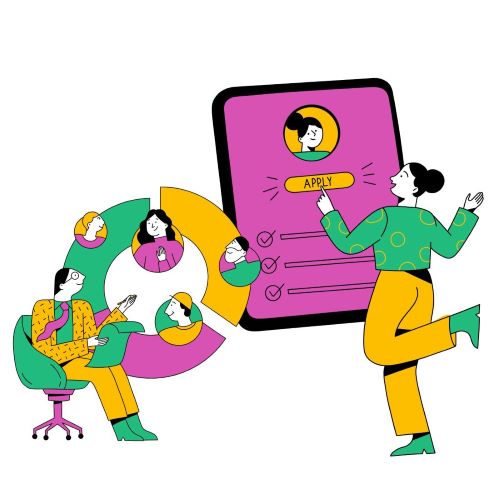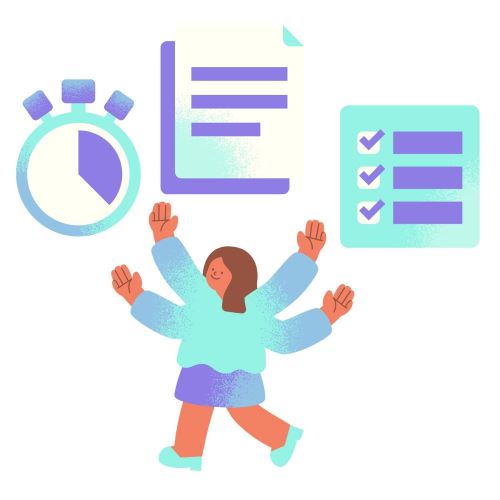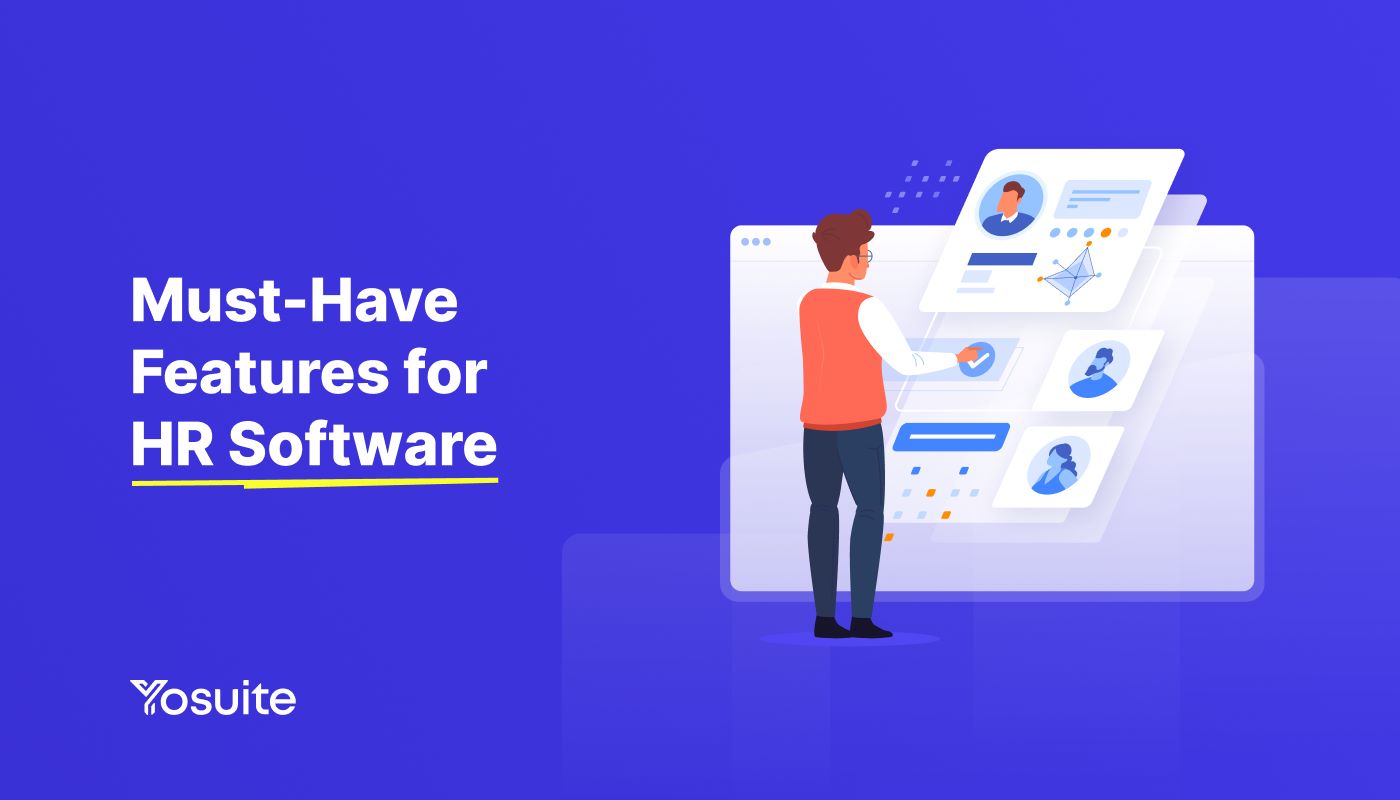Tired of tossing spreadsheets and manual tasks? Worry no more! HR software is your go-to solution!
But, the question is — what HR software should you choose?
This blog post will help you choose the HR software suited to your requirements. And after you learn the must-have features for HR software, we’re certainly sure that you’ll know which HR software you should choose.
So, let’s start digging!
Table of Contents
Understanding the Role of HR Software
HR Software plays a vital role in securing organizational success. It simplifies day-to-day operation, improves efficiency, and enhances employees’ experience. From recruitment tracking to offboarding, HR software ensures accuracy in a very minimal time.
Here are some key roles of HR software:
- Simplifying administrative tasks.
- Centralizing employee data.
- Enhancing recruitment and onboarding process.
- Driving employee engagement.
- Supporting compliance and security and so on.
Let’s take a quick look on the benefits of HR software in different use cases:
| Feature | Benefit |
|---|---|
| Centralized Database | Eliminates redundancies and simplifies employees’ data access. |
| Recruiting & Applicant Tracking | Applicant Tracking System (ATS) improves hiring efficiency and candidate experience backed by 94% of recruiters. |
| Onboarding & Offboarding | Increases new hire retention rate. |
| Payroll & Benefits | Reduces payroll errors. |
| Time & Attendance | Improves time tracking accuracy and compliance |
| Performance Management | Boosts employee performance by 14% to 18%, as indicated by Gallup’s 2023 engagement report. |
| Learning & Development | Increases employee skill development and improves retention rate due to learning growth. |
| Employee Engagement | Highly engaged employees are 21% more profitable and productive. |
| Self-Service Portal | Empowers employees and reduces HR workload. |
| Security & Compliance | Reduces risk of data breaches. |
| Reporting & Analytics | Provides data-driven insights to improve HR decision-making. |
| Integration Capabilities | Increases efficiency and reduces costs. |
| Mobile Accessibility | – Improves employee experience and engagement. – Easy access to leave requests and benefits. |
| User-Friendly Interface | Improves user adoption and reduces training time. |
14 Must-Have Features for HR Software
As we look ahead to 2025, certain HR software features are essential to transforming your business into another level.
1. Centralized Database
Storing physical files is really troublesome and inconvenient. It takes a lot of effort in finding and reviewing all the documents. With HR software, all the files will be stored in one database making them accessible at
all times in just a few clicks.
Here’s how centralized database can offer in your HR team:
- Improve data accessibility including personal information, employment records, and payroll data etc.
- Eliminate duplicate entries and errors.
- Automate data entry and retrieval of important files.
- Easy access to legal documents and audit trail.
- Data security due to its strong encryption and controlled access.
2. Recruiting and Applicant Tracking

Your HR software should have recruiting and applicant tracking. Applicant tracking system (ATS) reduces hiring timelines, human errors, and grasp best of the best talents.
Here’s how the recruiting and applicant tracking software helps HR team:
- Improved candidate quality backed by 79% of HR recruiters.
- Enhanced recruitment process by reducing the hiring cycle by about 60%.
- Automated resume screening and candidate communication reducing time-to-hire backed by 86% of recruiters.
- Automated job posting, application tracking, and interview scheduling promotes higher productivity.
So, make sure that your HR software includes functions like:
- Job posting and distribution
- Applicant screening and resume parsing
- Interview scheduling and tracking
- Candidate communication and feedback
- Talent management
3. Onboarding and Offboarding

A smooth onboarding procedure helps new hires feel welcomed and creates a good impression. On the other hand, an organized offboarding ensures a smooth transition and exit to departing employees.
Here are some compelling reasons of the need of HR software for onboarding and offboarding:
- Effective onboarding programs reduce early turnover and improved retention rate.
- Reduced knowledge gap during the handover of duties.
- Gather valuable feedback during exit interviews that will help in improving internal policies and work culture.
So, make sure to look for these functions:
- Automated paperwork and document management
- Welcome kits and personalized onboarding plans
- Exit interviews and survey to the management
- Compliance monitoring with local labor laws and regulations
4. Payroll Processing and Benefits Management
Accurate and timely payroll processing is very important for employees’ satisfaction. HR software must have payroll automation, tax deductions, and direct deposits. Moreover, it can help manage government mandated benefits enrollment, tracking, and reporting.
Here’s how HR software can offer with payroll processing and benefits management:
- Accurate payroll and compliance with tax regulatories and labor laws.
- Automated calculations, tax filings, and benefits distribution.
- Allows the HR team to monitor labor costs and budget benefits.
5. Attendance and Time Tracking System

Time and attendance tracking monitor employees’ hours, calculate rendered overtime for accurate payroll.
Here’s how the system is impactful:
- Eliminates errors in payroll by automatic recording of working hours and overtime.
- Helps HR team to determine the pattern of absenteeism and tardiness for faster resolution.
- Ensures compliance with labor laws.
To ensure that you have the best time and tracking software, look for these features:
- Time clock integration
- Shift scheduling
- Time-off requests and leave management
- Real-time and attendance tracking
- Automated timecard approval
6. Performance Management

Effective performance management ensures employees’ growth and development. It would give a fair chance for promotion to a bigger role. This is because HR software can simplify the performance evaluation, goal settings, and feedback. It can also track employees’ progress, and achievements.
Here’s how effective performance management with software become impactful:
- 80% of employees who received good feedback feel fully motivated and engaged.
- Helps employees stay aligned with the company’s goal.
- Identifies top performer employees and employees need more support.
- Increases employee retention rate and productivity level.
Additionally, HR software can determine skill gaps and suggest training to overcome the gaps. This means that HR software can help your employee align their goal with the company’s objectives.
7. Learning and Development
In order for employees to stay competitive, companies must also prioritize their growth. To achieve it, your HR software should offer an integrated learning management system (LMS). This system manages training and development modules, tracks employees’ progress, delivers online courses, and measures the effectiveness of the training programs.
Based on statistics, companies with advanced learning and development systems maintain a competitive edge for about 72%. Here’s why:
- Employees with comprehensive training feel more empowered and confident.
- Helps employees develop new skills making them easily adapt to workplace demands.
- Improves retention rate as employees prefer to stay with companies offering career development.
So, make sure to look for a software with gamified learning and virtual reality (VR) simulations to enhance employees’ engagement in the training.
8. Employee Engagement
It is very evident that when an employee is engaged, they become more productive and satisfied. HR software with effective employee engagement contributes to great success.
Here’s why:
- Engaged employees are 17% more productive than disengaged employees.
- 21% increase in profitability due to highly engaged employees.
- Staff turnover is reduced by 18%.
- Absenteeism is reduced by 41%
So, when choosing your HR solution, make sure that you look for these features:
- Sentiments analysis
- Pulse surveys
- Peer recognition or recognition programs
- Facilitates online team building activities
These features gauge morale and strengthen workplace culture. This would make the employees feel valued, heard, and motivated to do their best.
9. Employee Self-Service Portal
HR software with self-service portals saves a great deal of time. It minimizes Hr workload allowing to focus on other matters promoting even higher productivity.
So choose your software that gives access to:
- Personal information for possible updates
- Time-off requests
- Expense claims
- Pay stubs
- Performance reviews
10. Security and Compliance
Data security is the most concern in HR. Sensitive information must always be protective from any leaks and hacking. Make sure that you select your HR software with:
- Strong data encryption
- Multi-factor authentication
- Access controls
- Regular security audits
- Compliance with data privacy regulations, including the CCPA and GDPR
These features help HR to stay free from potential risks ensuring legally and ethically safe.
11. HR Reporting and Analytics
HR reporting and analytics provides actionable insights into hiring, retention, employee performance etc. Here’s few of what HR reporting and analytics can offer:
- Boosts hiring ROI by up to 150% and improves the quality of hire by 12-20%.
- Predicts future workforce requirements backed by IBM’s data with their 25% reduction on the turnover of their critical role for over 4 years.
When choosing the HR software, make sure that it offers customizable reports and analytics to track key metrics such as:
- Employee turnover
- Time to hire
- Employee satisfaction
- Training effectiveness
So look for software with these functions:
- A dashboard featuring interactive graphs and charts
- Report scheduling on a daily basis
- Access control
12. Integration Capabilities
An integrated system can automatically transfer candidate information from recruitment software to onboarding systems. Additionally, the integration can minimize human error and ensure up-to-date records.
A good software should integrate well with other HR systems including:
- Payroll,
- time and attendance,
- CRM etc.
So, look for software that offers API integrations or pre-built connectors.
13. Mobile Accessibility
Mobile accessibility is very important especially for remote team members or if the employees are working hybrid. HR software must provide a full functional mobile app. This will allow employees to perform tasks even when travelling.
Additionally, employees should have access to their personal information for any updates, salary and pay stub.
14. User-Friendly Interface
A user-friendly interface ensures that employees and the HR team can easily navigate the software. A simple interface encourages easy adaptation and maximum software utilization. Hence, look for software with simple navigation, clear layouts, and useful tooltips.
Conclusion
HR software is not only meant for bigger companies who have enough resources to spend. It’s now a necessity to promote engagement, productivity, growth, and to drive decision making in all enterprise levels.
To build a strong foundation of success with software, look for the features mentioned above. Your software is the solution to meet the high demand of the developing workforce.
Rooting for your success with HR software!

Leave a Reply